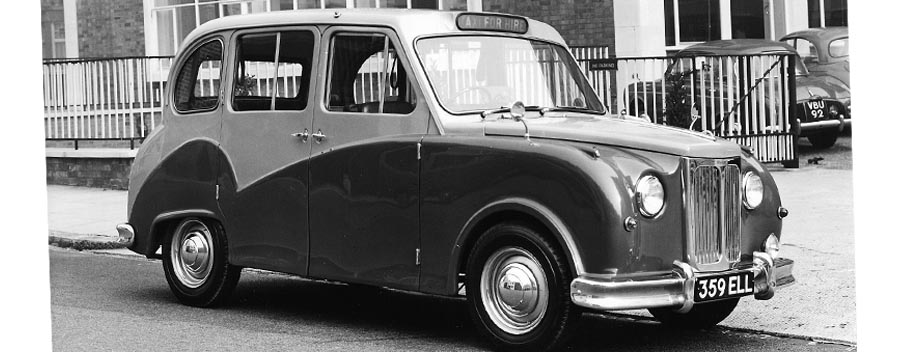
Hi Gang…
Today’s article is courtesy of Bill Munro – an automotive historian with an appreciation of the unusual and less traveled path of cars – and in this case commercial vehicles. Today’s story focuses on a 1960s variant of the emblematic London Taxi. It makes me want to travel there now – to the UK – and check them out myself 🙂
Let’s hear more about this story from Bill and away we go…
The Winchester Taxicab
Bill Munro
They say it’s the second mouse that gets the cheese: pioneers are not always the ones that go on to reap the success of early trials and tribulations. The British firm of James Whitson and Company was one of those pioneers left in the dust of the progress made by fiberglass car body makers, partly because their work was slated for poor build quality and partly because of a choice of taking on a bad project. In Whitson’s case it was the Winchester taxi.
The real advantage of fiberglass is that a small-scale car maker could build a body for a much lower investment than if tooling up for a steel one. This is what makes attractive to specialist sports car makers, but it isn’t only sports cars where the economics of fiberglass bodies make sense. There was another; the London taxi. All London taxis have to comply with very strict rules, the Conditions of Fitness.
These, written by the licensing authority, the Public Carriage Office demand the infamous 25-feet turning circle, a limousine configuration and certain body dimensions, where the roof has to be high – high enough, legend has it for a man to sit wearing a top hat. (Although this is possible, it exists as a legend, not a specific rule!).
In 1960 there were just 6,651 taxis licensed in London, and with a mandatory service life of ten years, that amounted to an annual renewal rate of just 600 cabs. This makes it a very small as well as a specialist market. But because taxi proprietors in London can only buy approved vehicles, it is a captive market.
In the 1950s that market had been largely sewn up by taxicab dealers Mann and Overton, with the Austin FX3 and its replacement, the Austin FX4, but around 1960, in its early years the FX4 was unreliable, expensive to run and prone to rust. The only alternative was the Beardmore, a cab that only made in penny numbers, because its coachbuilt body required skills in repair that were rapidly being lost, and the company, which once dominated the trade in the 1920s was a shadow of its former self.
But there was another organisation with its eyes on the market, the Owner Drivers Society, which as its name suggests was a trade body representing a specific section of cab drivers. They also ran their own insurance business, Westminster Insurance. They knew of the resistance the trade felt for the FX4 and believed they could kill two birds with one stone, by making and selling an alternative model and making the body from fiberglass, which they reckoned would be cheaper to repair after an accident and thus save their parent company money.
They would have called their taxi the Westminster, but Austin had beaten them to it, registering the name, and using it for their large sedans. So, Winchester was the name chosen for the cab and the manufacturing company, Winchester Automobiles (West End) Ltd.
By 1960, in Britain at least fiberglass technology for car bodywork had got into its stride. There were two main streams of production vehicles you could buy outright: on one hand there were sports cars like Lotus, Jensen, Peerless and Berkeley, with varying levels of build quality, cost and comfort. On the other, there were miniature, economy three-wheelers, like Bond, Reliant and Scootacar. You could also buy a body to put on a small sidevalve Ford or Austin 7 chassis, but these were cheap and crude. Now, with Winchester there would be a third, a taxi. But as they had no factory of their own, whom would Winchester Automobiles get to build it?
The company of James Whitson & Co Ltd had been founded in 1940 by Alfred Whittit, a coachbuilder who had served his time with Riley in Coventry, who latterly was the works director at the west London coachbuilder, Strachan. During WW2 Whittit left Strachan and founded his own company, James Whitson & Company. After the war he built a new factory at Sipson, near to where London’s Heathrow Airport now is.
Here he made a considerable number of stylish truck and bus bodies in the traditional manner with ash frames and steel or aluminum skins. But this method of building was declining fast, and Whittit recognised it, so he moved into the production of fiberglass bodies, building a new factory for this work at Yiewsley, Middlesex, not too far from Sipson.
Whilst there would be scope for fiberglass truck and bus panels, Whittit opted to make car bodies. As an early project he took on the Peerless, a sports coupe with a Triumph TR3 engine, and built the first bodies for the Citroën Bijou, a peculiarly British derivative of the 2CV, built at Citroën’s works at nearby Slough. However, he would loose both these jobs through poor build quality, and for the same reason failed to secure a contract to built Lotus Elite bodies.
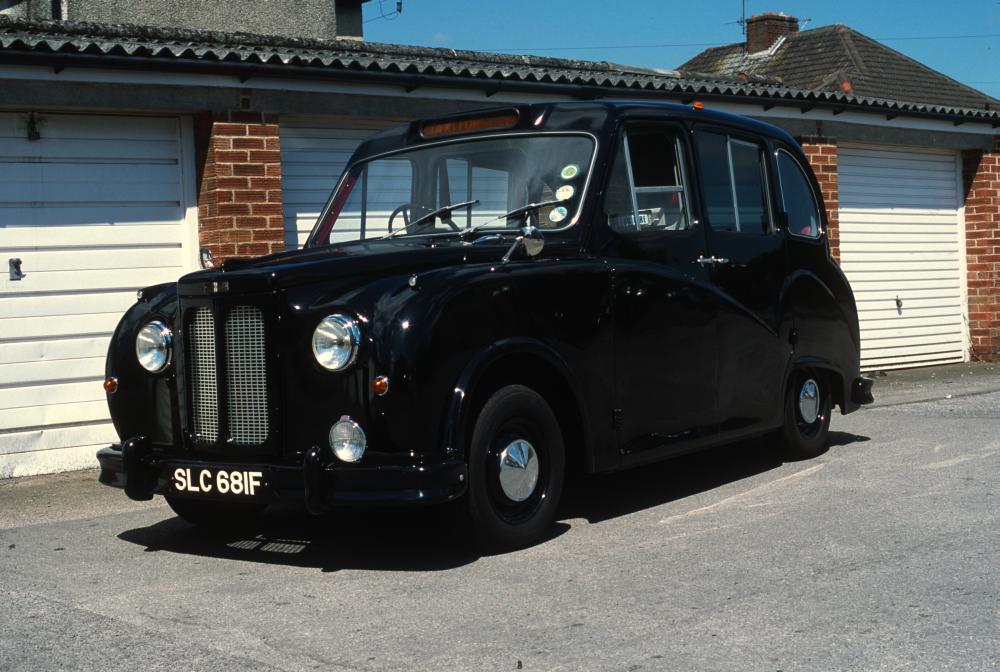
The Series III shared the Series II body, but used running gear from the Ford Transit van, including the 1.7-litre V4
One reason that Winchester Automobiles went to Whitson may have been Whittit’s involvement with Strachan, who had built taxi bodies for the Austin 12/4 taxi during the 1930s where Whittit would have discovered the mysterious ways of the Public Carriage Office. If Whitson’s inability to meet the standards of build quality required by Peerless and Citroën eventually caused the firm’s demise, taking on a contract for the Winchester was surely another contributory factor, because the Winchester was a real dog.
A taxi needs to comfortable to drive. That’s a no-brainer, because the cabman is stuck in it for ten hours a day or more. The Winchester was anything but, because the driving position was a back-breaker, and with a little Perkins 4.99 diesel up front, it was noisy and slow. Worse still, what Winchester Automobiles considered was their trump card turned out to be the opposite. Post-war, the cab trade had moved on from traditional coachbuilt bodies to all-steel bodies and they dug their heels in when it came learning how to repair another new material, fiberglass, especially on a cab that looked to be a loser from the start.
By the time the Winchester came onto the market in 1962, the build quality of the FX4 had improved somewhat, and the trade knew they could depend on Mann and Overton to deliver spare parts almost at a moment’s notice, a vital factor in keeping cabs on the road. Conversely, Winchester production never amounted to more than one a fortnight. When they needed parts to build a cab, they didn’t have a bulk supply of parts in a bin to dip into. Instead, they went down to the local motor parts shop and bought the bits, like switches, lights and the like over the counter.
It’s not known if Winchester gave up on Whitson, or vice versa, but Winchester followed Peerless’ successor brand, Warwick to a new supplier, Wincanton Engineering, who made two more successive models of Winchester, both sharing the same bubble shape but with different running gear. Winchester had been using a frame built by Rubery Owen, once a huge industrial concern making all kinds of components for the British motor industry, the most distinctive being the alloy lookalike RoStyle steel wheels found on later MGBs and Midgets. The Winchester’s frame was derived from that of the Beardmore, but in the mid-1960s, Rubery Owen underwent a major reconstruction and ceased to make the frame.
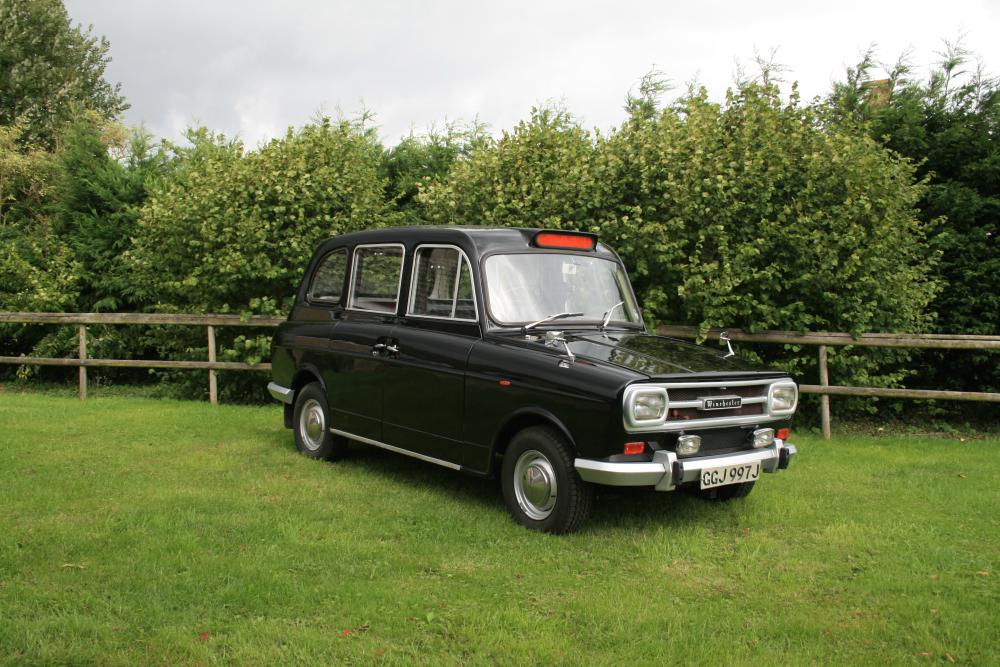
The Series IV was a very different vehicle, with a new frame and a new top to the body. It kept the Transit axles but came with a 1600cc Cortina petrol engine
In or around 1966, Winchester turned to Keewest Engineering, whose people were connected with Peerless and Warwick, and who would be involved with the elegant but ill-fated Gordon-Keeble sports GT. Keewest built a simple frame – you could call it crude and not be wrong – with Ford Transit van running gear and an all-new body that took a number of styling cues, very much distorted from the Bertone-styled Gordon-Keeble. Keewest had previous connections with the taxi world too.
Very shortly before Winchester got in touch with them, Keewest had been negotiating with Mann and Overton to design and build a fiberglass body for the FX4 replacement. This failed to materialise, but how much of the Series IV Winchester is owed to this work, we will never know. The Series IV was a far better model than the preceding ones, but it was all too late. The FX4 had been updated and was a much better vehicle. In 1973, Britain joined the European Economic Community and with that came a whole load of new regulations, not least a bundle of vehicle safety rules.
One of these demanded a crash test; another, burst-proof door locks. The chassis of the Winchester would have withstood the crash test, but the doors would have had to be redesigned and that would have been an impossibly expensive task, given the fact that less than 60 Series IVs had been built between 1968 and 1972. It was the end of the line.
There would be other London taxicabs with fiberglass bodies, notably the Metrocab and the retro-styled Asquith, but they’re for another time.
Bill Munro
Read about the Winchester, and other London taxis in one of Bill Munro’s books:
London Taxis – a Full History
London Taxis in Camera
Available at www.earlswoodpress.co.uk
Read a more detailed story of the Winchester in Carl Lemon’s book ‘The Winchester Taxi, a 50 Year Celebration’, Bowden Publishing, 2013 ISBN 978 09572 68524
Summary:
We have the best group around gang – dedicated researchers and enthusiasts all sharing and reading stories about our favorite topic – Forgotten Fiberglass! Great thanks goes to Bill Munro for sharing this article with us today.
Now….about that trip to the UK….it might just have to happen – sooner – rather than later now that I’m more schooled on the history of the London Taxi 🙂 Thanks Bill!
Hope you enjoyed the story, and remember gang…
The adventure continues here at Forgotten Fiberglass.
Geoff
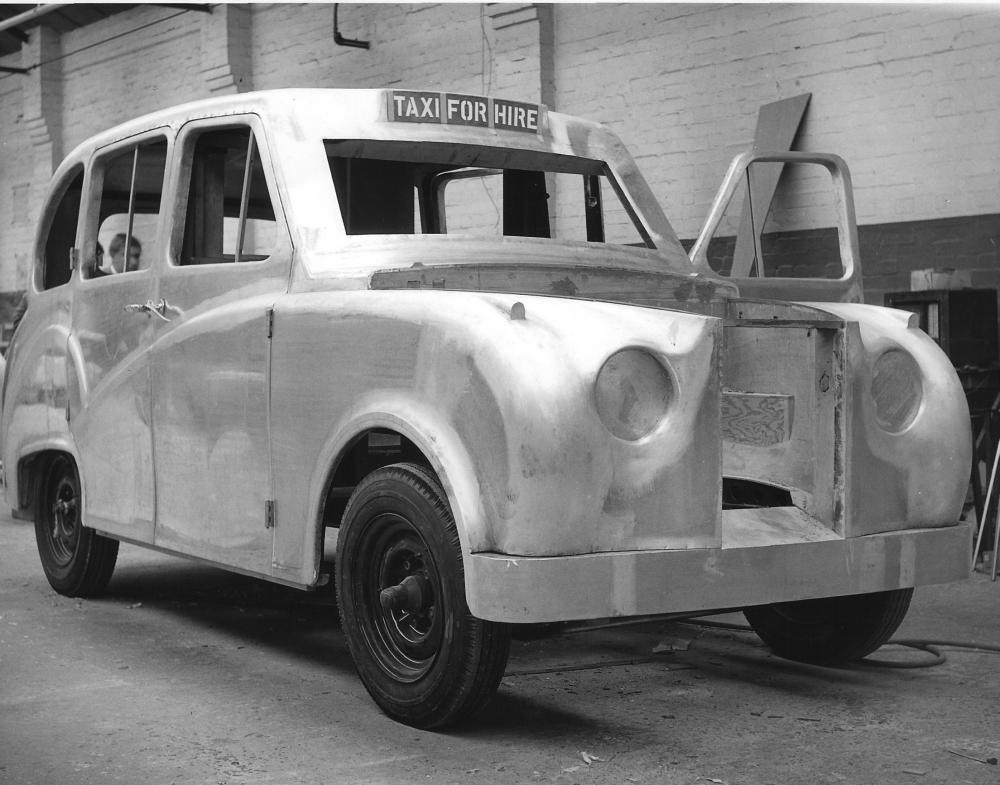
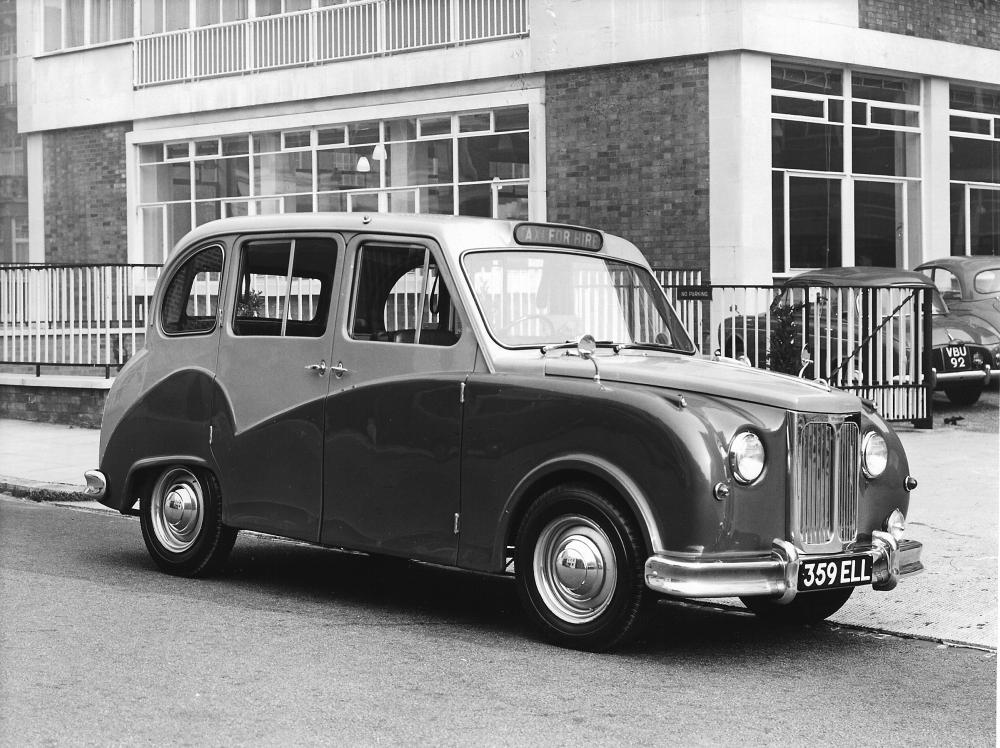
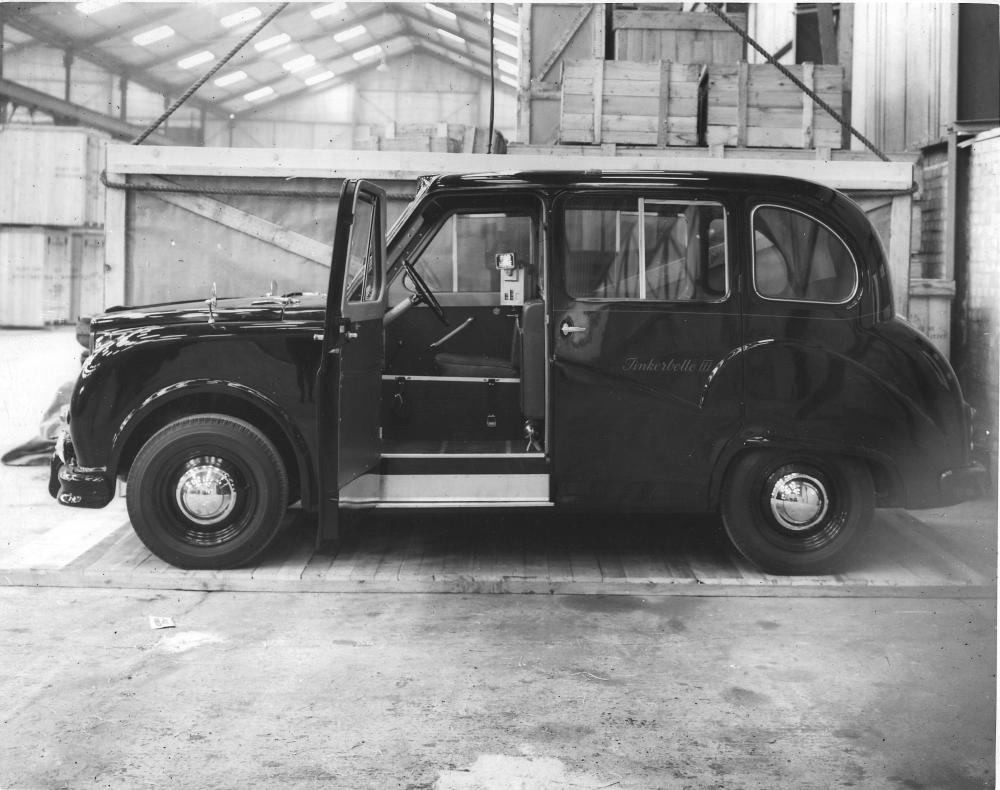
I own a Winchester Taxi (1968 Mk III ) which I believe is the only complete and running MkIII Winchester left. I find it is a very comfortable and decent driving car. Since the Mk III version rides on a Ford Transit chassis running gear, it runs and drives much like any other small delivery vehicle of that era. I’m sure the earlier versions were more primitive, with the Perkins diesel, but the MK III is fitted with the little Ford V-4 gas engine and a 4 speed gearbox, so it goes along rather well. The suspension is primitive, being leaf sprung and solid axles, but it is a pleasant car for running around town in, which is what they are designed to do. My particular Winchester did time in London as a cab, when new, and then was shipped abroad, eventually ending up in Palm Beach Florida, as the personal car of a wealthy eccentric lady, for many years, before I got it.
There has never been any major mechanical restoration on it, yet it still drives smoothly and is rattle and squeak free, after decades or use. Though they were fiberglass bodies, it is still a coach-built car in many ways, with the wood framed windows in the doors, and the wood flooring under the rubber mats. At 50+ years old, the doors still shut perfectly. It is a peculiar car in looks, but it draws more attention than any other car I own. I plan on keeping it for years to come, as its not often one can own the sole surviving example of any automobile, without investing massive amounts of money.
Hello Captain Don. Good to hear that you are a satisfied Winchester owner! I’m not sure that yours is the only MkIII left running, unless yours is the one I pictured, SLC 681F. According to the London Vintage Taxi Association’s Winchester expert, Carl Lemon, this was exported in 2009.
Are you a member of the London Vintage Taxi Association? lvta.co.uk
Hi Bill,
Thanks for the reply! I love your site, and the commitment to documenting all the early fiberglass cars
I do belong to LVTA and have corresponded extensively with Carl Lemon about my Winchester MkIII. From what Carl has related, there were a couple of MKIII Winchester’s known to be registered and running years back (not mine, as it was non-running then), but it seems that none of them have surfaced in recent years. I have tried to locate SLC681F and cannot find any reference to it since the 1990’s Carl believes that my MkIII is the only one currently registered and driving. Of course, with only a dozen MkIII’s built, they would be rare, even if they all survived.
Regardless of rarity, its a really fun car to own and drive, and draws a lot of attention at the few shows I have brought it too.
Hi Don, great to hear from you. I must say from the off that this website is not mine; I simply contributed the feature on the Winchester.
I’m pleased to hear that you are an LVTA member. I’ve just taken back the editorship of Vintage Taxi and you may have received the July/August edition by now. Perhaps you can contact me directly by email, using address inside the front cover of VT? There are a few points relating to the LVTA and your cab that are not pertinent on this forum
Wao! I love this post, those fords are really great. I wish, I travel one of these vintage cars. Heathrow Taxis
i just got a Mark II windchester taxi. Does any body have any information on these taxis???
have you still got the Winchester?
These taxicab limousines look like they would be really comfortable to sit in. I wonder what kind of limosine services are provided in my area. I hope that I can find something similar to what you have pictured here.
Those Fords are…awesome! Pair one of those with a new Ford commercial truck and I’m in heaven. All I need now is a garage!